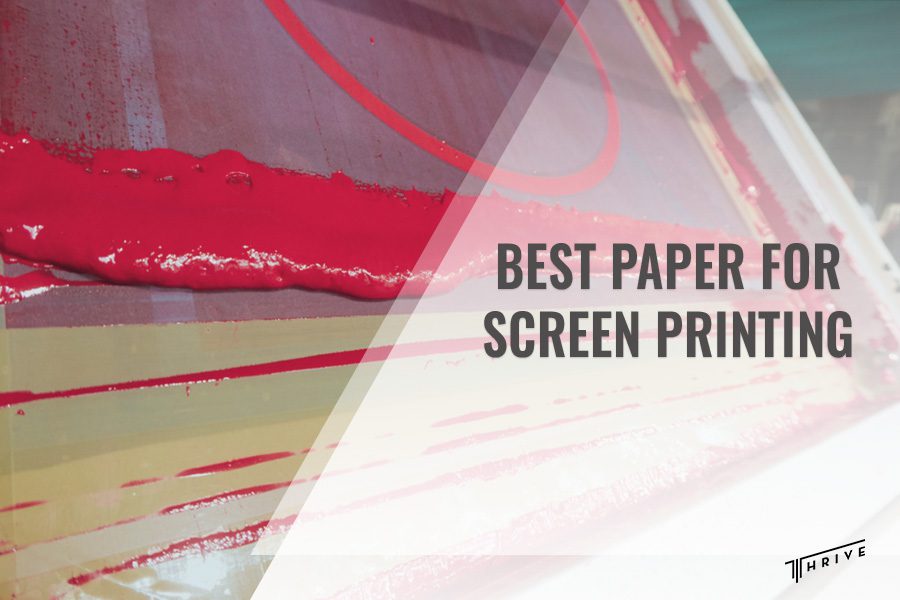Given the extensive stages of screen printing, choosing a paper for screen print can seem like an afterthought. But if you want to go beyond the belief that any paper goes with screen printing, you’d certainly want to try out different types of paper, and what’s better than choosing the best paper for screen printing?
When selecting the best of the best, we embark on a journey to craft high-quality prints. From color and texture intricacies to weight considerations, each aspect plays a crucial part in determining the quality of the print.
Factors to consider when choosing the best paper for screen printing
When evaluating paper quality for screen print services, it’s essential to delve beyond the surface considerations of color, texture, and weight. Particularly with commercial poster-type papers, there’s a risk of unexpected reactions during printing, potentially resulting in issues. Additionally, these papers may be more prone to deterioration when exposed to sunlight over time.
Layers of color
Examining common aspects in paper responses reveals the significance of layers of color. In the case of lightly or non-sized paper, the ink tends to absorb into the paper, impacting how colors are rendered.
On the other hand, surface-sized paper retains ink on its surface, enabling the possibility of layering and building up intricate designs. This distinction is especially crucial for achieving desired outcomes in printing.
Texture
Texture plays a pivotal role as well. A smoother paper surface contributes to sharper images, capturing finer details, which is particularly advantageous for printing photographic silkscreens.
Conversely, when a heavier texture sheet is used, the finish or surface becomes a more pronounced element of the final image. This interplay between texture and image outcome adds another layer of consideration for those seeking specific visual effects in their prints.
Weight
Weight considerations extend beyond the apparent factor of stability. Heavier papers are chosen for their capacity to withstand wear and tear and to prevent undesirable buckling, especially when dealing with larger sheet sizes. Following a general rule of thumb, larger sheets benefit from increased weight, making handling the paper more manageable and ensuring a smoother printing process.
Stability
Stability in screen printing means selecting a paper that consistently maintains its dimensions during printing. Papers with minimal stretch or contraction are crucial for precise registration when printing multiple layers or overlays of colors.
Inconsistent paper behavior, such as excessive stretching or contracting, can lead to misalignment issues, affecting the accuracy and quality of each printed layer. Choosing a stable paper ensures that the registration, or alignment, of different colors remains intact, allowing for a clean and well-defined final print.
Three Best Papers for Screen Printing
Coventry
Coventry, internally sized with moderate surface sizing, is an ideal option for serigraphy and is equally well-suited for fine art offset lithography. It has a dual surface – textured vellum and smooth. Additionally, this paper accommodates embossing and gold or silver foil stamping. It was Erte’s preferred and dependable sheet for creating his iconic silkscreen fashion art pieces during the 1970s and 1980s. It is considered for fine art prints and projects requiring a clean finish.
| Type | Texture | Weight |
| 100% cotton rag paper | Smooth surface Ideal for detailed screen printing | Medium weight Providing durability without being too heavy |
Stonehenge
Stonehenge is a beautiful all-purpose paper. A 100% rag (cotton) sheet is a domestically manufactured multimedia sheet suited for screen printing.
Stonehenge can take multiple layers of wax-based and oil-based colored pencils without buildup, allowing colors to penetrate and absorb into the sheet’s surface.
Also, it is an excellent silkscreen paper that can take as many colors as possible and print one color at a time. It maintains perfect color registration due to its incredible dimensional stability. It is considered for edition printing, fine art reproductions, and projects with a tactile feel.
| Type | Texture | Weight |
| 100% cotton Acid-free paper | Versatile with a slightly textured surface Allowing for different effects in screen printing | Medium to heavy Providing stability for various applications |
Strathmore 400 series
Strathmore 400 series heavyweight printmaking paper is a natural white paper that is ideal for printmaking processes requiring heavier paper, such as screen print.
This printmaking paper has a soft, durable, medium-textured surface that may absorb large amounts of ink. It is considered for edition printing, screen printing, and projects requiring consistent and reliable results.
| Type | Texture | Weight |
| Acid-free 100% cotton fiber paper | Smooth with a velvety finish Enhancing color vibrancy in screen printing | Medium weight Suitable for a range of print projects |
Natural Papers for Screen Printing
Cotton
Cotton paper is one of the most common papers for screen printing. Cotton is perfect for screen printing because the paper tends to absorb colors better and is more durable than other commercial papers on the market.
Silk
Silk is excellent for screen printing because of its smoothness. Therefore, there is relatively less risk of an uneven design than with other natural papers.
However, one thing to note is that the printed design on silk won’t be as good as on cotton paper. Sometimes, silk doesn’t absorb colors well, translating to a muted, pastel look for screen-printed silk design.
Conclusion
The quest for the best paper in screen printing requires meticulous attention to details like color, texture, and weight. Choosing the paper is crucial for bringing the designs to life. Throughout our exploration, we’ve untangled the nuances that define successful prints. Whichever one you choose, be it Coventry, Stonehenge, or Strathmore 400 series, you are guaranteed a perfect final design. Each paper allows colors to penetrate and absorb perfectly on the surface of the sheet.

Robert Fisher is the founder and CEO of Thrive Screen Printing and brings extensive experience in the screen printing and fulfillment industry.


